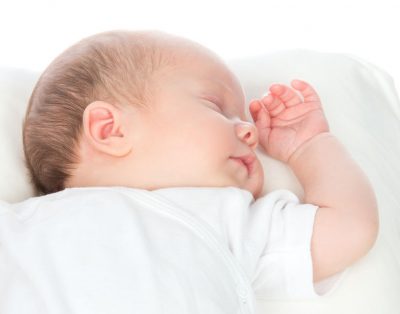If you’re a new or expecting parent and you don’t know much about safe sleep, you’re not alone.
The importance of practicing safe sleep is woefully absent from our society’s cultural awareness. Yet, SIDS is the leading cause of death among babies between 1 month and 1 year of age.
Making matters worse, unsafe sleep is glorified on social media by popular brands and influencers who may or may not know any better. Most well-meaning parents have no idea that they are putting their babies’ lives at risk, just by doing what they see everyone else doing.
Further, many parents don’t realize that sleep-related infant death is almost entirely preventable. There are a handful of very simple things that caregivers can do to render the risk of SIDS and SUID negligible.
Let’s take a look at four of them:
#1 Follow the ABCs of safe sleep
This means that day and night, infants should sleep:
A – alone (with no objects, loose bedding, or people in the sleep space)
B – on their back
C – in a regulated crib, bassinet, or play yard
These evidence-based guidelines mean that many common parenting choices are unsafe: bed-sharing, allowing a baby to nap in his swing or lounger, and adding cushioning to make a baby’s mattress more comfortable, just to name a few.
#2 Stop swaddling in time
There is a high risk of death if a swaddled infant rolls onto his stomach. This is why the AAP recommends that babies no longer be swaddled once they show signs of being able to roll over.
Since many babies start developing this ability around 2 months of age, parents who want to err on the side of caution should preemptively stop swaddling at 8 weeks.
#3 Dress your baby appropriately for sleep
Overheating is a known risk factor for SIDS and SUID. Parents should dress their babies for sleep based on the temperature of the room, not the temperature outside, and should avoid over-bundling.
One of the best ways to dress a baby for sleep is to layer pajamas underneath a sleep sack (wearable blanket). Generally speaking, a baby’s sleep attire should be no greater than 1 layer more than what an adult is comfortably wearing. Parents should feel their baby’s core to make sure he is warm, but not hot or sweaty.
#4 Consider offering a pacifier
When the aforementioned safe sleep precautions are taken, parents can reduce the risk of SIDS and SUID even further by offering their baby a pacifier at the start of every sleep period.
Incredibly, doing so decreases the risk of sleep-related death by up to 90%, even if the baby does not continue to suck on the pacifier.
The good news is that practicing safe sleep isn’t complicated and largely boils down to establishing the right habits.
Just like parents are vigilant about making sure their infants are safely buckled in their car seats (whether the baby likes it or not), practicing safe sleep is simply a matter of prioritizing basic safety rules no matter the circumstances.
Author Bio:
 Lauren Lo is a San-Francisco based mom and safe sleep advocate. She is the founder of adensmom.com, an evidence-based blog for new parents.
Lauren Lo is a San-Francisco based mom and safe sleep advocate. She is the founder of adensmom.com, an evidence-based blog for new parents.
Website: https://www.adensmom.com
Pinterest: https://www.pinterest.com/adensmomblog
Twitter: https://twitter.com/adensmomblog

